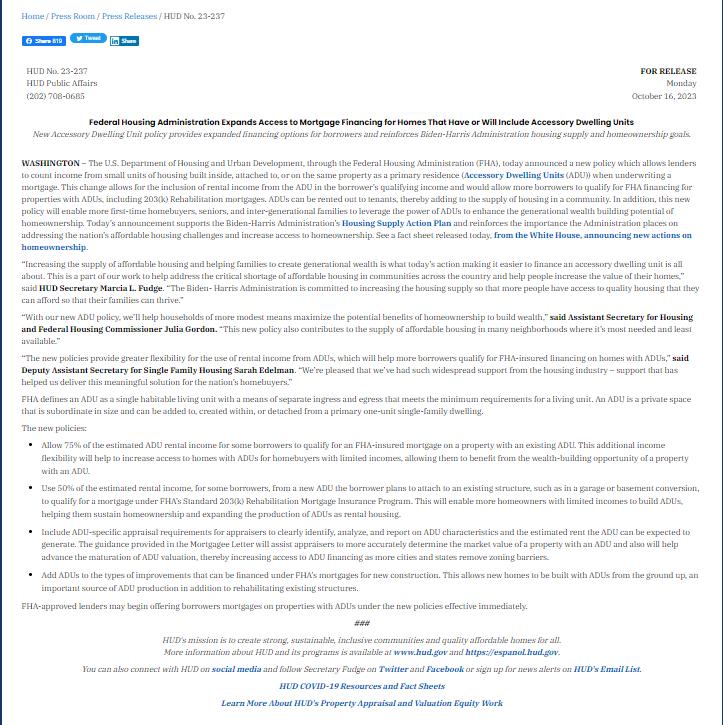
1 minute read
Most Multi-Gen Occupants See Positives
from KCM and DPR Realty November 2023 National and Local AZ Housing Market Update, Shambreskis & Howard
Percent Who Find Living with Adult Family Members To Be _____ Most of the Time 58%
Convenient
Rewarding
Stressful
The circumstances over the past few years — between the 2008 financial crisis and the COVID-19 pandemic — have changed the way families are buying homes. According to data from the National Association of Realtors, multi-generational buying rose to an all-time high in 2022: 14 percent. Compare that to 2021, when this option was at 11 percent.
Multigenerational living has increased among all age groups over the past five decades. But the increase has been fastest among adults ages 25 to 34.
. . . builders are now developing multigenerational floor plans that include designs with two master suites, including main floor suites with kitchenettes. Many offer shared spaces for gathering as the extended family while also providing additional privacy when it’s needed most. . . . Some include flex space that can shift from a family office to a nursery to give you the ability to adapt. Some include detached casita living options for even more privacy for your family.
Triangle Business Journal
Federal Housing Administration Expands Access to Mortgage Financing for Homes That Have or Will Include Accessory Dwelling Units
In a significant policy change, Fannie Mae has announced that . . . it will accept 5% down payments for owner-occupied 2-, 3-, and 4-unit homes. This marks a departure from the previous multifamily financing requirement of 15-25% down.
- Aleksandra Kadzielawski, Senior Editor, The Mortgage Reports

If you’re interested in multigenerational housing for your next move, you may want to consider talking to a trusted agent and a local lending company to find out how combined finances can help you get the right home for your needs.

National policymakers, local leaders and lending institutions hold the power not only to protect the recent strides made by Latino households, but also to accelerate progress and bolster our national economy.
The private sector can expand access to credit by boosting language access in the mortgage and credit markets, improving underwriting of self-employed borrowers and lending more to multigenerational households.



